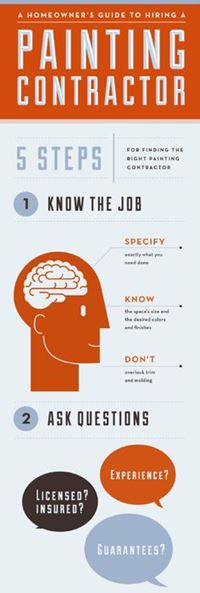Variables To Take Into Consideration For Industrial Exterior Paint By Season: Essential Information You Need To Have
Variables To Take Into Consideration For Industrial Exterior Paint By Season: Essential Information You Need To Have
Blog Article
Authored By-McLamb Rosendal
When you're preparing an industrial external painting job, seasonal aspects can make or break your results. You'll wish to think about how temperature and humidity effect paint application and drying times. Picking the appropriate period can guarantee your paint adheres correctly and lasts longer. However which seasons are really the best for this kind of job? Allow's check out the crucial elements that can impact your job's success.
The Effect of Temperature Level on Paint Application
When you're intending a commercial external painting project, the temperature level can dramatically affect just how well the paint adheres and dries.
Ideally, you want to repaint when temperatures range between 50 ° F and 85 ° F. If it's as well cold, the paint might not cure properly, leading to problems like peeling or fracturing.
On the other hand, if it's also warm, the paint can dry also rapidly, preventing correct attachment and leading to an irregular finish.
You ought to likewise take into consideration the moment of day; morning or late afternoon offers cooler temperatures, which can be much more favorable.
Constantly check the maker's referrals for the certain paint you're using, as they usually provide advice on the optimal temperature array for optimum results.
Moisture and Its Effect on Drying Times
Temperature isn't the only environmental variable that influences your commercial outside painting job; humidity plays a substantial duty also. High humidity degrees can decrease drying times drastically, affecting the total quality of your paint work.
When the air is saturated with dampness, the paint takes longer to treat, which can cause issues like poor attachment and a greater danger of mold development. If https://www.bobvila.com/slideshow/the-13-painting-mistakes-almost-everyone-makes-48420 on an especially moist day, be planned for extended wait times in between layers.
It's crucial to monitor local weather and plan appropriately. Preferably, aim for moisture degrees in between 40% and 70% for optimal drying out.
Keeping these consider mind guarantees your project remains on track and supplies an enduring surface.
Best Seasons for Commercial Exterior Painting Projects
What's the best time of year for your commercial outside paint tasks?
Springtime and very early fall are commonly your best options. During these seasons, temperature levels are mild, and humidity degrees are often reduced, creating ideal problems for paint application and drying out.
Avoid summertime's intense heat, which can trigger paint to completely dry too rapidly, leading to bad adhesion and coating. In a similar way, winter's chilly temperature levels can hinder correct drying and healing, taking the chance of the durability of your paint task.
mn painters for days with temperatures between 50 ° F and 85 ° F for optimal results. Bear in mind to examine the local weather report for rainfall, as damp conditions can ruin your job.
Preparation around these elements guarantees your paint task runs efficiently and lasts longer.
Conclusion
Finally, preparing your commercial exterior paint jobs around seasonal factors to consider can make a significant distinction in the result. By scheduling work throughout the suitable temperatures and moisture degrees, you'll make sure better bond and drying out times. Bear in mind to keep an eye on neighborhood weather report and select the correct time of year-- springtime and early autumn are your best options. Taking these actions will certainly assist you accomplish a long lasting and specialist coating that lasts.
